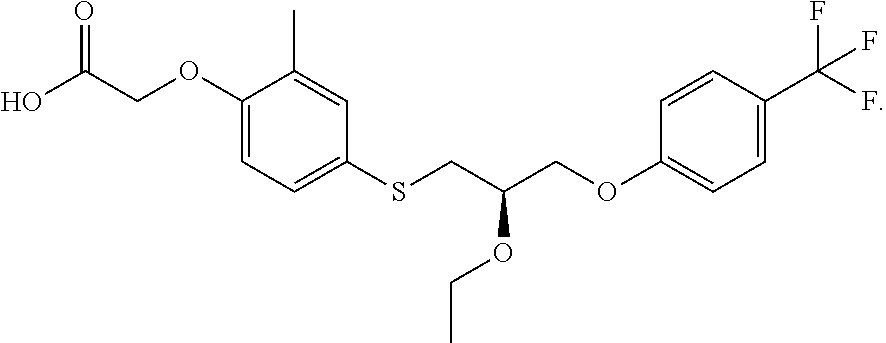Treatment of intrahepatic cholestatic diseases
a cholestatic disease and intrahepatic technology, applied in the direction of medical preparations, pharmaceutical delivery mechanisms, capsule delivery, etc., can solve the problems of scarring, fibrosis and cirrhosis, liver disease worsening, etc., to reduce cholestasis, effective treatment, and alkaline phosphatase.
- Summary
- Abstract
- Description
- Claims
- Application Information
AI Technical Summary
Benefits of technology
Problems solved by technology
Method used
Image
Examples
example 1
[0045]The trial subjects were adult, male or female, with a diagnosis of PBC by at least two of the following three criteria: (a) a history of alkaline phosphatase (ALP) above the upper limit of normal (ULN) for at least six months, (b) positive anti-mitochondrial antibody titers ≥1 / 40 on immunofluorescence or M2 positive by enzyme linked immunosorbent assay or positive PBC-specific antinuclear antibodies, and (c) documented liver biopsy result consistent with PBC, on a stable and recommended dose of UDCA for the past twelve months, and ALP≥1.67×ULN. Exclusion criteria included AST or ALT≥3×ULN, total bilirubin (TBIL)≥2×ULN, autoimmune hepatitis or a history of chronic viral hepatitis, PSC, the current use of fibrates or simvastatin, the use of colchicine, methotrexate, azathioprine, or systemic steroids in the previous two months, the use of an experimental treatment for PBC, and the use of an experimental or unapproved immunosuppressant. The primary study endpoint was decrease in ...
example 2
[0046]Adult subjects with an intrahepatic cholestatic disease such as PBC are treated orally with doses of 5, 10, 25, or 50 mg / day of seladelpar. Subjects are permitted their usual other medications, including UDCA. The subjects are assessed before the study, and at intervals during the study, such as every 4 weeks during the study and 4 weeks after the last dose of the seladelpar therapy, for safety and pharmacodynamic evaluations. At each visit, after a 12-hour fast, blood is drawn and urine collected; and a standard metabolic panel, complete blood count, and standard urinalysis are performed. Blood is analyzed for TC, HDL-C, TG, VLDL-C, LDL-C, and apolipoprotein B, for liver function markers such as total and bone-specific alkaline phosphatases, for γ-glutamyl transpeptidase, and also for total and conjugated bilirubin. The subjects also maintain health diaries, which are reviewed at each visit. The subjects show an improvement in their disease, as manifested by, for example, a d...
PUM
| Property | Measurement | Unit |
|---|---|---|
| particle size | aaaaa | aaaaa |
| particle size | aaaaa | aaaaa |
| particle size | aaaaa | aaaaa |
Abstract
Description
Claims
Application Information
 Login to View More
Login to View More - R&D
- Intellectual Property
- Life Sciences
- Materials
- Tech Scout
- Unparalleled Data Quality
- Higher Quality Content
- 60% Fewer Hallucinations
Browse by: Latest US Patents, China's latest patents, Technical Efficacy Thesaurus, Application Domain, Technology Topic, Popular Technical Reports.
© 2025 PatSnap. All rights reserved.Legal|Privacy policy|Modern Slavery Act Transparency Statement|Sitemap|About US| Contact US: help@patsnap.com

